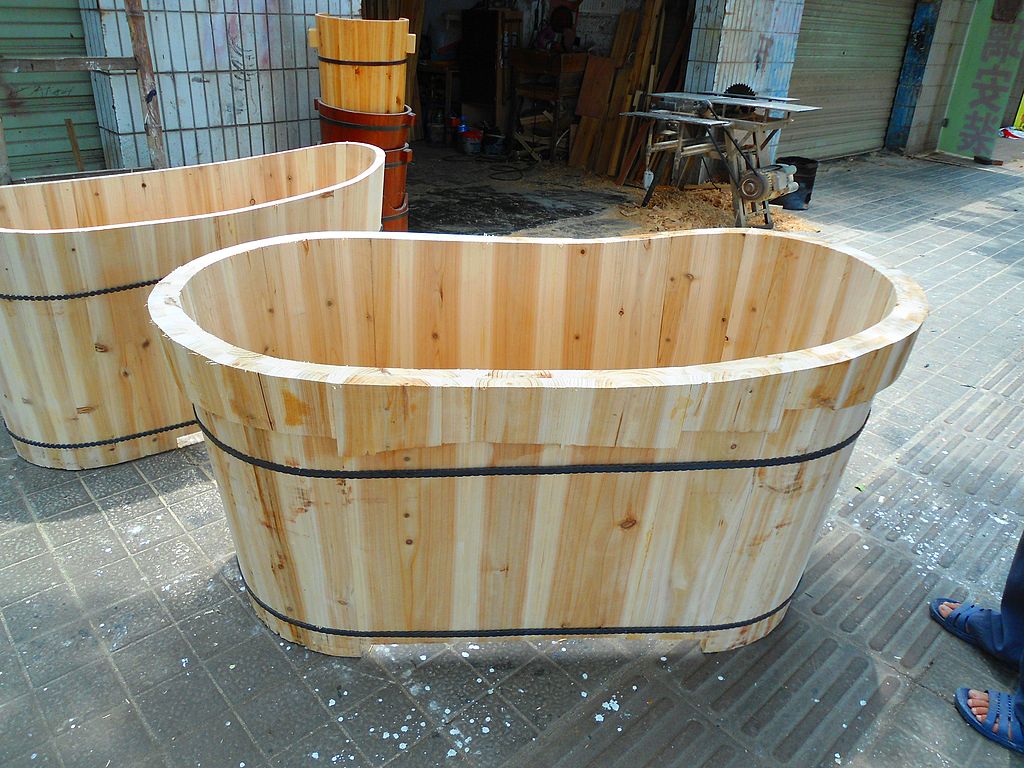Great for the body and mind, soaking tubs are a big hit to people as a way of relaxing and unwinding after a long, hard, and stressful day at work or home. From helping relieve your stress to getting you a good night’s sleep, there are plenty more benefits for you and your health to get by soaking in a bathtub. And you don’t need to go anywhere anymore because you can have your bathtub installed in your home.
While the steep price tag may turn you off at first, remember that the market is filled with reasonably priced options. A Japanese soaking tub, for example, may seem expensive, but it’s worth the expense considering the health benefits and the added value it can bring to you and your home. Hence, they’re one of the top options people look at when it comes to purchasing soaking tubs.
What is a Japanese Soaking Tub?
A small but deep bathtub, Japanese soaking tubs are designed for people to submerge and leisurely soak their whole body in clear or soapy water. And though you will find soaking tubs big enough to stretch your legs and lie down, Japanese tubs may be smaller in size but are deeper, which contributed to their popularity over the years.
Thanks to its small size, it’s perfect for homes with small bathrooms. People can still enjoy a soak every night without having to worry that it took up so much space in their bathrooms. And you will still get comfortable as these tubs are designed with a built-in seat that allows users to sit upright, lean back, and soak their tired and stressed bodies for as long as they like.
What is the Difference between Japanese and Western-Style Soaking Tubs?
One of the main differences between the two styles of soaking tubs is that you get to save more water. Smaller in size, you will need less water to fill it up compared to American-style tubs. Another thing is that the former lets you have a deep soak, something you can’t do with a standard American tub. This is because it’s deeper and the water remains hot if you decided to soak in hot water as it cools down more slowly, helping you enjoy a relaxing soak. Other differences include its features, materials used in building these tubs as well as the unique look, especially for people who went for the traditional Japanese soaking tubs.
All these and more are the very reasons why more and more people opt for Japanese tubs than the Western style. They’re popular among people living in compact-sized modern homes where space needs to be considered for anything and everything.
What are the Factors to be Considered When Choosing Soaking Tubs?
Budget and capacity are two of the topmost factors that should always be taken into account whenever purchasing an item as big as a soaking tub. Please continue reading to know what the other factors are:
1. Available Bathroom Space
Although the tub’s capacity sure is essential, you also have to take into consideration the available space in the bathroom where you’ve decided to place the soaking tub. Before browsing among a variety of designs and styles, make sure to check the dimensions of the available space to ensure it’ll fit what you just purchased. Not doing so can result in a cramped bathroom space where you should have been relaxing. One solution is getting a freestanding foldable soaking tub that you can assemble to use and dismantle when not in use.
2. Shape
And since bathroom space is already discussed, it’s good to know that there are different shape options to choose from too. Modern soaking tubs can be customized to fit your preferences, but you can also choose from what’s already available in the market. From square and round to rectangular and oval, there are plenty of shapes that these tubs come in. You just have to decide and measure what’s going to fit your bathroom.
3. Installation
Aside from the cost of buying a Japanese soaking tub, you will also need to consider what the cost of tub installation would be. Though you may strike a deal with the vendor, it’s good to know what the possible costs will be so you can prepare. In addition, there may be a need for some plumbing reconfiguration to accommodate the tub’s installation. It’s good to have a professional to do the installation to ensure it’s in good working condition.
4. The Materials for the Tub
Upon browsing, you will notice that these tubs come in various materials. Traditionally, hinoki cypress wood is used in building these Japanese soaking tubs. But as its popularity transcended worldwide, other materials were used such as acrylic, stone, cedar, and many more. If you’re going for a specific look in your bathroom, it’s good to know that you have different options of materials as well as styles to choose from.
Conclusion
Is it a good purchase then? The answer to this is a big, resounding YES, especially when you consider all of the benefits you and your family (or even house guests) will get from having it installed in your home. At the end of the day, it’s a place where you can have a comfortable and relaxing bathing experience.








